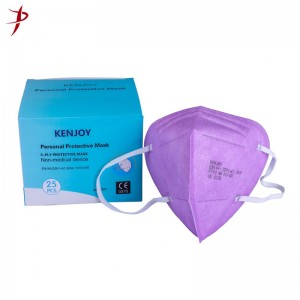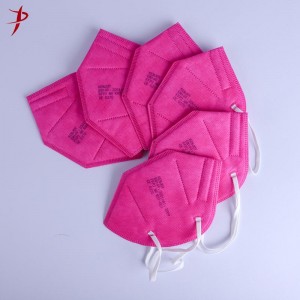What's the difference between KN95 and N95| KENJOY
The virus spreads through droplets so fast that it is hard for people to control it, so wear a mask!! Even if you come into contact with an infected person, wearing an FFP2 mask prevents you from breathing the virus directly into droplets. So what is the difference between kn95 mask and N95 mask? Let's follow the mask wholesale to see!
The difference between KN95 and N95
The N95 mask is actually a respirator, a respirator designed to fit more tightly to the face than a respirator and to filter airborne particles very effectively. Where, N stands for Not resistant to oil, which can be used to protect non-oily suspended particles; 95 means a filtration efficiency greater than or equal to 95 percent, indicating that, after careful testing, the respirator can block at least 95 percent of very small (0.3 micron) test particles.
In terms of design, if it is ranked according to the priority of the wearer's own protection capability (from high to low):N95 mask & GT; Surgical mask & GT; General medical masks & GT; Ordinary cotton masks.
When worn correctly, N95 filters better than regular and surgical masks. However, even if wearing is fully compliant, the risk of infection or death is not 100% eliminated.
KN95 is one of the grades stipulated in Chinese standard GB2626-2006
N95 is one of the classes specified in the American standard 42CFR 84.
The technical requirements and testing methods of the two levels are basically the same.
The filtering efficiency reaches 95% under corresponding standards.
How often can KN95 masks be changed
In the absence of an adequate supply of masks, the CDC advises reusing the device as long as it is not visibly soiled or damaged (such as creases or tears).
Masks should be replaced in time when the following conditions occur:
1. When respiratory impedance is significantly increased;
2. If the mask is damaged or damaged;
3. When the mask does not fit closely with the face;
4. The mask is contaminated (e.g. stained with blood or droplets);
5. It has been used in individual wards or in contact with patients (because it has been contaminated);
whether need a breathing valve
N95 is divided into two kinds with or without air valve. N95 respirators for people with chronic respiratory conditions, heart disease or other conditions with symptoms of breathing difficulties may make it more difficult for the wearer to breathe, so using an N95 mask with an exhalation valve allows them to exhale more easily and helps reduce heat buildup.
The exhalation valve is exquisitely designed with several caps that close when inhaled to ensure that no particles enter. When you exhale, the lid opens, allowing hot, humid air to escape. It also has a soft lid to make sure no small particles get in.
In recent days, there have been a lot of misunderstandings about N95 with an exhalation valve. Some people think that there is no protection if there is an exhalation valve.
A study published in 2008 specifically looked at whether expiratory generation could affect the wearer's protection. Conclusion is that -
Whether there is an exhalation valve does not affect the respiratory protection of the carrier. Simply put, the N95 with exhalation protects the wearer, but
Not protecting the people around you. If you are a carrier of the virus, please choose N95 without air valve, do not spread the virus open. if
To maintain a sterile environment, an N95 with an exhalation valve should not be used, as the wearer may exhale bacteria or viruses.
The above is the introduction of KN95 and N95. If you want to know more about FFP2 masks, please contact our mask manufacturer. I believe we can give you more professional and detailed information.
Learn more about KENJOY products
Post time: Dec-15-2021



